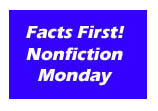Weirdly wonderful or is it wonderfully weird?
I’m going to have to add a new tag to my list – weirdly wonderful.
I seemed to have found a few of these kinds of books, lately. These are the types of books that are unusual or quirky enough that will spark imaginations and engender conversations.
This book is based on a game known as the Exquisite Corpse. In this game, one artist will draw the head of a person. The next artist will draw the torso but without looking at the head and the third person will draw the bottom part/legs of the body without knowing what the top 2/3 looks like. You can imagine the interesting results.
The Exquisite Book is divided into 10 chapters. Each chapter is composed of ten illustrations drawn by 10 different artists. The first picture is based on an open-ended theme, such as In the clouds, In the mountains, In the trees, or In the jungle, and can be whatever the artist envisions related to the theme. The second picture is based on the first illustration, the third illustration is based on the second (without knowledge of the first), and on it goes. When all 10 pictures are completed they are strung together to tell a ‘story’. The pictures are folded accordion style, so the reader/viewer can see each individually, then all in a row. Or, at least, five at a time. (The first five pull out together and then you turn the page and see the last five.) Each artist’s style is unique, playing against the others. Again, you can imagine the interesting results.
I love the idea behind this book. I love the idea behind a game like this. I love the idea of trying to create narrative in such an interesting and unique way.
Unfortunately, for me the execution didn’t always work. But I think this was my failing and not necessarily the book’s. I think I was hoping for a stronger ‘story’ to come through or wanted more explanation for some of the illustrations. Some of the pictures are pretty bizarre and I wanted to know what the artist was thinking and how their picture connected to the theme. If you just go with the wonder of seeing hugely divergent artistic styles being brought together around a theme, then you’re going to be fascinated with this book. On that level, I, too, was drawn in…but, I did want to understand more.
If you look for this book, definitely read the forward and definitely read the ‘20 Questions’ section, too. These are questions posed to several of the artists and sometimes it does give some insight into what went into making the illustrations.
But, in terms of teaching art and storytelling, I think this book will inspire some very interesting class projects at many different grade levels.
The Exquisite Book from ALSO on Vimeo.



















